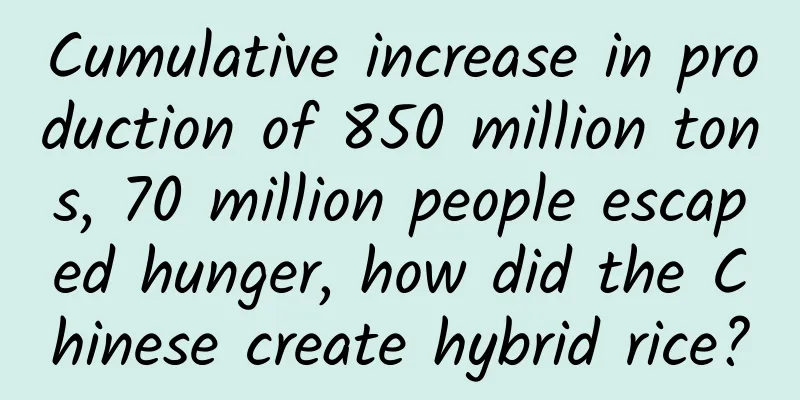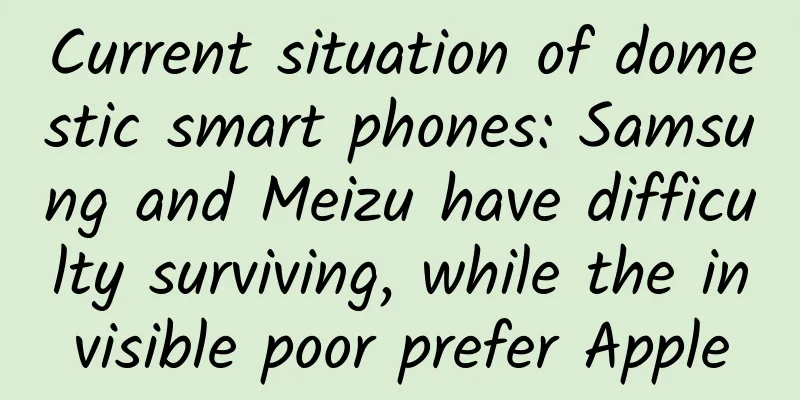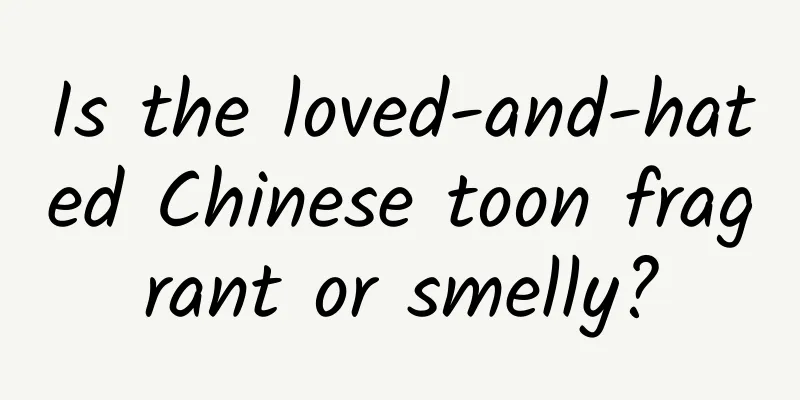Cumulative increase in production of 850 million tons, 70 million people escaped hunger, how did the Chinese create hybrid rice?

|
Now the area of hybrid rice in my country has exceeded more than half of the total rice planting area, with the cumulative increase in production reaching 850 million tons, and 70 million people have been saved from hunger. So how did the Chinese make hybrid rice? When it comes to hybrid rice research, it began as early as 1926. At that time, American scientist Jones discovered through research that rice crops have hybrid vigor. What is hybrid vigor? The traits of plants are determined by genes, and genes are divided into dominant genes and recessive genes. Genes themselves appear in pairs. In a pair of successfully paired genes, as long as there is a dominant gene, the plant will show dominant traits. Only when a pair of genes are all recessive will the recessive traits be shown. What does this mean? It means that dominant traits are more likely to appear than recessive traits, so as long as plants continue to crossbreed, recessive genes will gradually be eliminated. Rice is a very interesting plant. Its dominant traits are basically dominant traits, so through continuous hybridization, the offspring of rice can become more dominant. This sounds easy, but it is difficult to do. Therefore, although hybrid rice had a relatively mature theoretical basis before the 1950s, researchers in no country have been able to truly make hybrid rice. Why is rice difficult to hybridize? Because rice is a self-fertile plant, which means it is self-pollinating. Each rice flower has stamens and pistils, and they pollinate themselves. Under normal circumstances, there is no chance of hybridization. So, wouldn't it be better to remove the stamens artificially? Artificial removal of the stamens means cutting off the stamens before pollination begins, so that there is no way for self-pollination, and hybridization is the only option. However, this method is acceptable for some plants, but not for rice, because each rice flower only produces one seed, that is, one grain of rice. It is simply impossible to remove the stamens artificially one by one, one plant by one, and one generation after another. Artificial emasculation is impossible, so there is only one way, which is to find a naturally male-sterile rice. In 1961, Yuan Longping discovered a unique rice plant in a rice field, which made him ecstatic and named it "Crane stands out from the crowd". Yuan Longping planted the seeds of this rice plant in the field and took good care of it, but the result was not as expected, because he did not get a sturdy rice field, but a bunch of uneven offspring. Disappointed, Yuan Longping immediately thought of the reason. "Crane stands out from the crowd" itself is a natural hybrid rice, so the offspring will have separated traits. Since there is a natural hybrid rice, it means that there must be natural male sterile plants in the original rice field. After a year of searching, Yuan Longping, his wife and students finally found six naturally male sterile plants in the rice fields. What should we do next? This is related to the three-line hybrid rice method proposed by Yuan Longping, which is the "three-line method" we often hear. The so-called three-line method, the first line is the sterile line, that is, to find natural male sterile plants. After the sterile plants are obtained, hybridization can be started, but the hybrid rice cannot be planted directly, because the hybrid rice still has recessive genes. If it is planted directly, the offspring will show trait separation, so the second line, that is, the maintenance line, must be started. The so-called maintainer line is to ensure that the offspring of rice still maintain the male sterility trait after hybridization, so that hybridization experiments can be carried out continuously and recessive genes can be eliminated. When high-quality hybrid rice is finally obtained, the third line, which is the restorer line, must be entered. Sterile plants cannot be planted, so the sterile hybrid rice must be restored to fertile hybrid rice through the final hybridization. As for how to operate the maintenance line and the restorer line, this involves more genetic knowledge, which will not be discussed in depth here. According to Yuan Longping's three-line method, we finally obtained the Shanyou 63 hybrid rice with an increase of more than 20%. Later, the three-line method evolved into the two-line method, which is to combine the maintenance line and the restorer line into one, and the yield was further increased by more than 10%. Now the hybrid rice we grow is already a two-line hybrid rice. For more information, please follow the official account: sunmonarch |
<<: How to deal with the "return of the south wind" that makes people in the south very upset?
>>: How can one have a photographic memory?
Recommend
Fast-charging people enjoy the world first, Changan Lumin 301km fast-charging model officially launched at 61,900
On October 18, Changan Lumin 301km Miqin model (f...
Tik Tok is rapidly declining
Douyin and Kuaishou are becoming more and more si...
7 essential skills for operators - Business analysis is a high-level capability for operators
1. What is business analysis capability? Business...
Can art be created on the tip of a knife? Exquisite ivory carving
The original ivory with carved floral patterns is...
China Passenger Car Association: China's automobile exports will reach 4.76 million units from January to November 2023, and the growth rate will still maintain a high growth rate of over 50%
Cui Dongshu, secretary general of the China Passe...
Why do flies always like to "rub their hands"? They even twist their heads off to play with them? I was shocked after reading the truth...
Expert: Zhang Qikai, Chinese Academy of Agricultu...
The biggest drawback of China's color TV industry is that companies do not have market pricing power
In the first half of 2014, domestic sales of flat...
This penguin has a unique way of molting, and they've been having some trouble lately...
Produced by: Science Popularization China Author:...
From "delivering people" to "delivering goods", the gorgeous transformation of the Tianzhou spacecraft
In May 2023, the Tianzhou-6 cargo spacecraft was ...
When the projector becomes a "ball": Haier iSee mini user experience
Nowadays, electronic products come in more and mo...
The new mechanism of Huoshenshe video account and the way to play health tea without brushing likes, easily earn 1000+ a day
Huo Shen She Douyin Book List 70% Commission Huge...
Why Are Your Facebook Ads Burning Money So Fast?
When you run Facebook ads , one of the most impor...
Apple releases new version of MacOS: can share iOS applications
Today, Apple updated many of its systems. In addi...
How much does it cost to customize a supplement mini program in Jining?
The launch of mini programs has brought convenien...




![Manual translation of the basic principles of CG rendering [HD quality with material]](/upload/images/67cbfe4cd98d6.webp)




